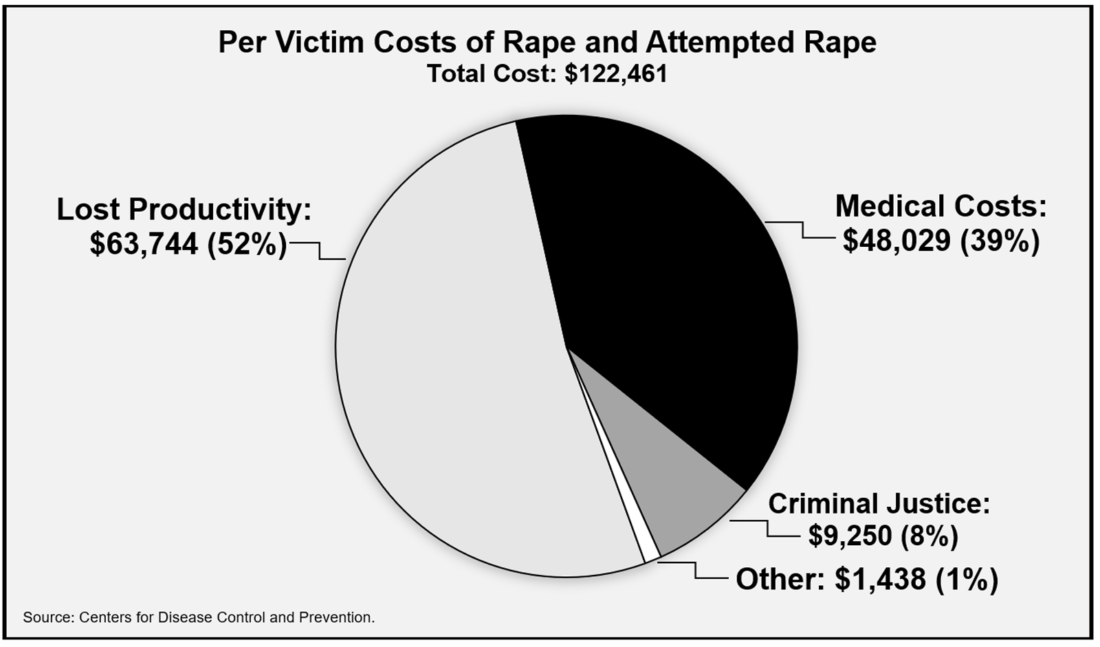Economic costs of sexual assault

The recent testimonies of Dr. Christine Blasey-Ford and Brett Kavanaugh before the U.S. Senate highlighted a dark and dangerous chapter in American history. Given their testimonies, only the most insensitive among us would not be deeply moved by the tragedy of sexual assault.
You can count President Trump as one who was unmoved. Of course, the president’s behavior at his recent campaign rally in Mississippi, where he mocked the testimony of Dr. Blasey-Ford, should come as no surprise given his previous despicable behavior. Among others, he has mocked the disabled, women, and veterans. So, for him, mocking victims of sexual assault is just another notch in his belt.
Beyond that and darker yet, the audience at that Mississippi campaign rally enabled the President with their laughter, cheers, and applause, which amounted to no less than a gang rape of Dr. Blasey-Ford’s testimony. In contrast and to their credit, several senators from the president’s own party did stand on the side of decency by categorizing his comments as “kind of appalling,” “just plain wrong,” “wholly inappropriate” and “unacceptable.” Besides being a dark chapter in American history, this is also a dangerous chapter because it sends the message to women that, while you might be heard, telling your stories of sexual assault still comes at a very, very high cost.
On top of the devastating emotional and psychological costs of sexual harassment and sexual assault, the economic costs are also very high.
Lifetime cost of rape and attempted rape
In June 2017, the American Journal of Preventative Medicine published a study that found the lifetime cost per victim of rape or attempted rape was $122,461 (see chart). Those victims included both women and men. The study, which was conducted by researchers at the Centers for Disease Control and Prevention, was based on data from several thousand respondents to the 2011 U.S. National Intimate Partner and Sexual Violence Survey. To add some perspective, the New York State Department of Labor statistics show the average annual wage in Essex County in 2017 was $39,799 and in Franklin County was $42,703. The lifetime economic cost of rape or attempted rape is equal to about three years’ wages for the average worker in Essex and Franklin counties.
The total number of victims and total costs of all victims is staggering. At the time of the study, the CDC estimated more than “25 million U.S. adults had been raped” at a total lifetime cost of $3.1 trillion (2014 U.S. dollars). Their breakdown of total costs included: “$1.2 trillion (39 percent of total) in medical costs, $1.6 trillion (52 percent) in lost work productivity among victims and perpetrators, $234 billion (8 percent) in criminal justice activities, and $36 billion (1 percent) in other costs, including victim property loss or damage” (Peterson, DeGue, Florence, & Lokey, 2017).
In a subsequent study published in the July 2018 edition of the American Journal of Preventative Medicine, the CDC also reported on “short-term lost productivity because of intimate partner violence, sexual violence, or stalking.” They found “victims collectively reported 741 million short-term lost work and school days, or a simple average of 5.7 days per victim. The estimated value of that lost productivity was $110 billion, or a simple average of $841 per victim” (Peterson, DeGue, Florence, & Lokey, 2017).
—
Everyone bears the cost of sexual assault
Sexual harassment affects us all. Even if no one in your family or circle of friends has been sexually harassed or assaulted, which is very unlikely, the CDC study noted, “Government sources pay an estimated $1 trillion (32 percent) of the lifetime economic burden” of the costs associated with rape or attempted rape. Those “government sources” are paid for by your tax dollars.
Also, in her Harvard Business Review article (November 2017), “The Insidious Economic Impact of Sexual Harassment,” Nilofer Merchant notes “while researchers have attempted to quantify the economic cost to individual women of being harassed, we may never be able to fully quantify the total economic cost to all of us — just as we can’t quantify the total costs to human prosperity of racism or other systemic discrimination.”
She also notes, “according to data collected by sociologist Heather McLaughlin and others, about 80 percent of women who’ve been harassed leave their jobs within two years.” Merchant contends productivity suffers and innovation is stifled when women exit their workplaces because of sexual harassment.
—
See something, say something
Given that our president is a self-confessed sexual predator, as recorded on the “Access Hollywood” tapes, it might seem like an insurmountable uphill battle to combatsexual harassment and sexual assault. Still, over the last few years, great strides have been made as many men in high-powered positions, including politicians, television personalities, business moguls and religious leaders have lost their jobs and have, at long last, been brought to justice. Similar strides need to be made in all levels of the workplace and of society. The scales of justice are still tipped in favor of sexual predators, but those scales are starting to level out a bit as more and more women are telling their stories of sexual harassment and assault.
The “See Something, Say Something” slogan is designed to enlist everyone in the battle againstincidences of domestic and international terrorism. It is also applicable to the battle against the terror and terrible costs of sexual harassment and sexual assault.




